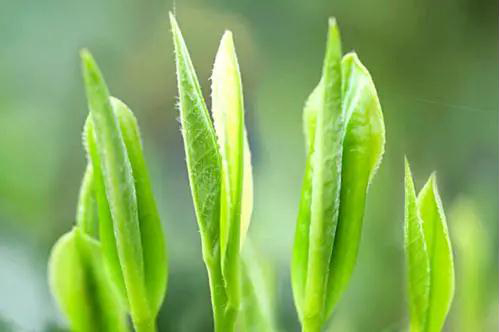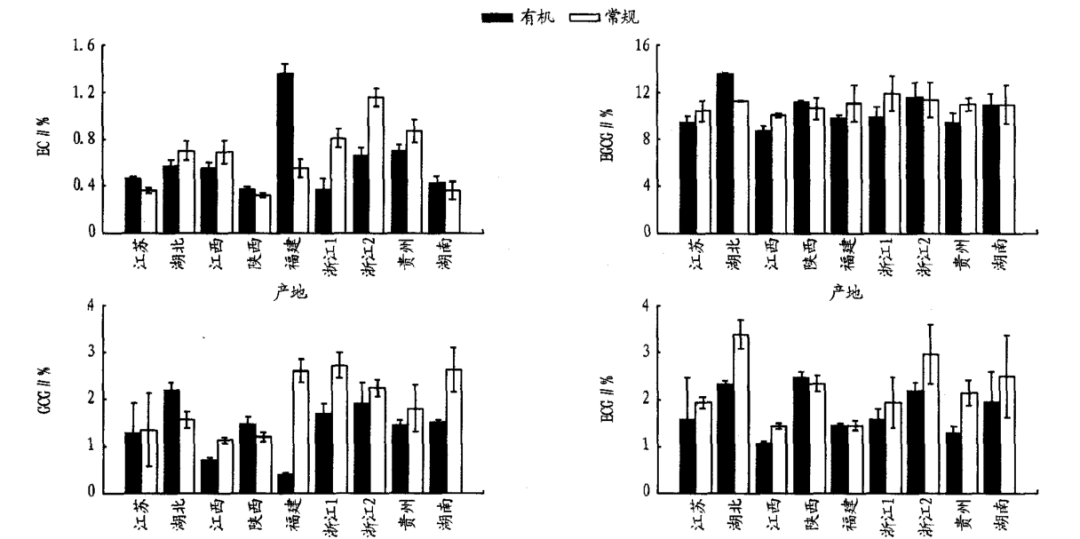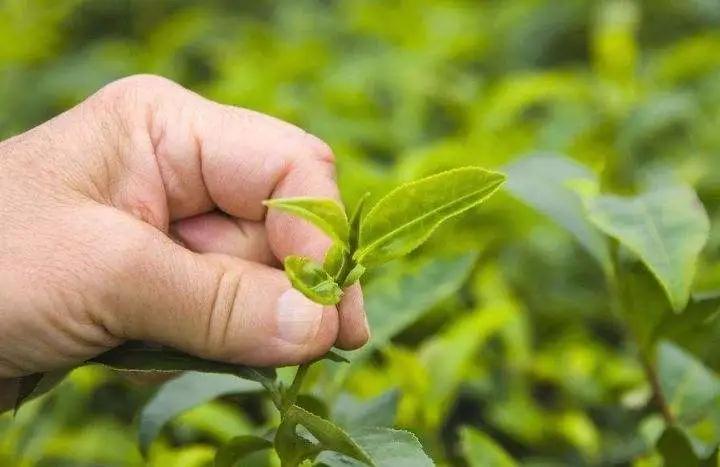In recent years, with the increasing demand for tea quality, there are more and more controversies on organic tea. Supporters of organic tea argue that organic tea is safer, contains richer substances and has better taste, while opponents say that organic tea is not much different from common tea and is not as good as advertised. So, are there any difference between organic tea and common tea?

The researchers of Nanjing Institute of Environmental Science of China's Ministry of Environmental Protection compared substances contained in organic green tea from Nanjing(Jiangsu), Wudang Mountain(Hubei), Wuyuan(Jiangxi), Hanzhong(Shaanxi), Zhangzhou(Fujian), Hangzhou(Zhejiang), Fenggang(Guizhou), Shimen(Hunan), etc. with substances contained in common green tea from the same regions. We may be able to draw some more intuitive and reliable conclusions.
Content of each component of catechins

Catechins in organic green tea and common green tea and contents of main components of catechins
Catechin is the main active component of tea polyphenols, accounting for about 70%-80% of the total amount of tea polyphenols. ECG(epigallocatechin) and EGCG(epigallocatechin gallate) are the main catechins, which mainly have the anti-oxidation, anti-cancer, anti-cardiovascular-disease, anti-ultraviolet-radiation, antisepsis and anti-inflammation effects.
As can be seen from the above figure, the total content of catechins in organic green tea from Shaanxi, Hubei and Fujian is higher than that in common green tea from the same regions, while the total content of catechins in organic green tea from Jiangxi, Zhejiang, Guizhou and Hunan is lower than that in common green tea from the same regions.
The quality of green tea, however, does not depend on the total content of catechins, but mainly on the content of each component of catechins and their proportional relation. The exponential formula is 100*(EGCG+ECG)/ECG. The higher the catechin index is, the better the quality of tea is.
The calculation results show that the average value of the catechin index of organic green tea is 744.98, which is higher than 617.29 --- the average value of the catechin index of common green tea. Moreover, the catechin index of organic green tea from the same regions is higher than that of common green tea, the highest of which is organic green tea in Wuyuan, Jiangxi Province, which reflects that the shoot tenderness-keeping ability and the quality of organic green tea are higher than those of common green tea.
Content of caffeine, theanine and gallic acid

Content of theanine, caffeine and gallic acid in organic tea and common tea
Caffeine is the main factor in the bitter taste of tea soup. The figures show that in addition to Fenggang(Guizhou) and Wudang Mountain(Hubei), the content of caffeine in most organic green tea is lower than that in common green tea, which indicates that the bitterness degree of organic tea is lower than that of common green tea, wherein the content of caffeine in organic green tea from Wuyuan, Jiangxi Province is the lowest.
Theanine is an important substance to form the fresh fragrance of tea. It can make the tea soup more fresh and sweet, and relieve the excitement caused by caffeine.
Meanwhile, the ratio of catechin to amino acid is an important index to reflect the quality of tea infusion. From the ratio of catechin to amino acid, it can be seen that the ratio of catechin to amino acid of organic green tea from different regions is lower than that of common green tea in general, wherein the ratio of catechin to amino acid of organic green tea in Nanjing, Jiangsu Province is the lowest, its bitter taste is the lowest, and the ratio of catechin to amino acid of organic green tea in Zhangzhou, Fujian Province is the highest.

Gallic acid has many biological activities such as anti-inflammation, anti-oxidation, anti-mutation and anti-free-radical. The figures show that the content of gallic acid in organic green tea from Hubei, Zhejiang and Guizhou is higher than that in common green tea, while the content of gallic acid in organic green tea from Jiangxi and Fujian is lower.
By comparing the taste and nutrition indexes such as catechin, caffeine, amino acid of organic green tea and common green tea, it can be seen that the shoot tenderness-keeping ability and the quality of most organic green tea are better than those of common green tea, the bitterness is lower, and the taste is fresher and sweeter. Of course, the study is only a sample of comparison between part of organic green tea and common green tea, which can not cover all green tea. The evaluation of the quality of organic tea needs to be further verified with expanded samples.


